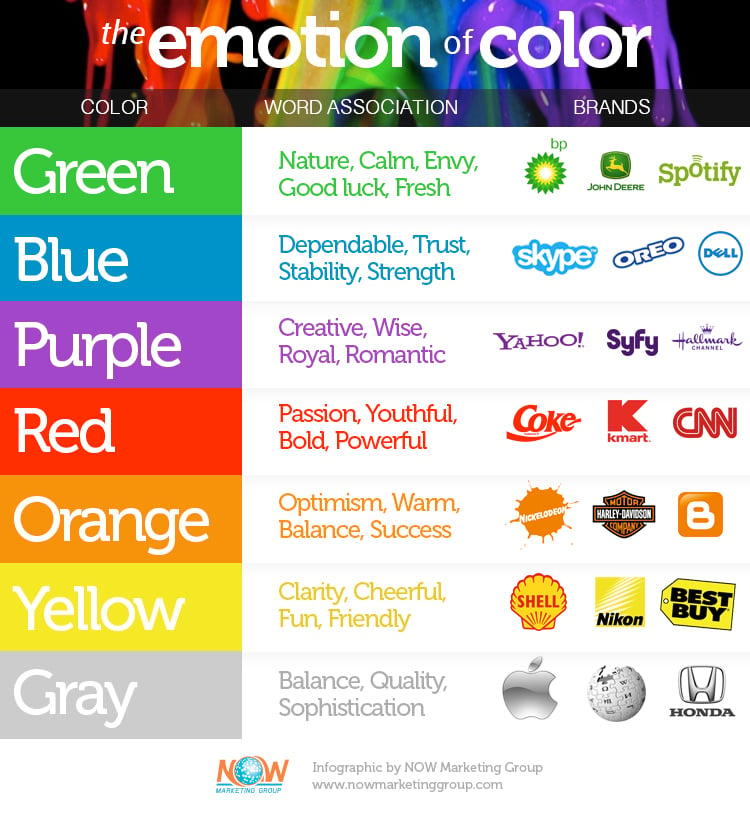
You probably have a favorite color and a fair explanation as to why it ranks number one for you.

In the era of modernity, mood colors are also now greatly utilized to further the success of advertising and marketing campaigns. Mood colors, as they may often be referred to, have for centuries been used in works of art to evoke intended emotional responses from viewers. The famous Swiss psychiatrist Carl Jung would later expand upon Goethe’s findings to develop the art theory regarding how color may assist in battling trauma. Goethe’s findings would profoundly impact development in areas of literature, psychology, and art into the 19 th and 20 th centuries. His understanding of how the human eye and brain processed light led him to establish the argument that different colors could elicit different emotional and psychological responses in people. His work stressed that the individual human observer was a key ingredient in the mix that determined the perception of light. The primary argument proposed by Goethe was that color not only represented the physical properties of light but that it also carried an equally important component regarding psychology and subjectivity. The significance of his studies cannot be understated as they offered a challenge to the pre-existing theories based primarily on the works of Newton. In 1810, a German artist by the name of Johann Wolfgang von Goethe would publish a ground-breaking theory wherein it would first be hypothesized that color can have a direct effect on the moods and emotions of viewers. He managed to do so by refracting white light through a prism, which led to the identification of composite colors like yellow, blue, red, green, violet, orange, and indigo. In the year 1665, Sir Isaac Newton discovered the color spectrum while studying at Cambridge University. The Ancient Greeks, Chinese, and Romans also held a firm belief of something similar to contemporary understandings of color theory, specifically the now-scientifically proven notion that color can indeed affect moods. The Ancient Egyptian word “iwn” means “color,” and the term itself was intimately linked to the concept of personality and complexion.

Although they were centuries away from developing any scientific discourse to contextualize why these effects occurred, they used this knowledge for holistic and health benefits. Even the ancient Egyptians had enough of an understanding of color psychology to realize how different colors could affect people’s moods. The origins of color and its impactful relationship with human emotions can be traced back beyond even the era of antiquity. When we are able to comprehend the complexities of color and the intrinsic role it plays in our day-to-day lives, we are not only better able to appreciate its power but can also put it to practical use. On the other hand, we have cultures that instead see red as a symbol of anger or danger. A good example of this would be the color red, which is perceived by many cultures of the world as the color of passion and love. Not only do the associations with colors differ among cultures but people may also develop their own associations based on their individual lived experiences. Besides the scientific aspects of color and how it is perceived, there are also cultural and personal aspects of significance that contribute to the responses they generate. When wavelengths of light bounce off objects and enter our eyes, these cones are then stimulated to send signals up to the brain where we may then interpret the color of an object. We have three of these cones in each eye and each of these cones is sensitive to a particular wavelength range. Inside our eyes, we have cones specialized cells that allow us to view color. The perception of color is a fascinatingly intricate process that demands the involvement of both physiological and psychological facets. This green is then reflected back from the object where it is then perceived by our eyes. If we take a green apple, for example, we perceive it as being green because it absorbs every color of the light spectrum besides green. Thus, the color of any object is determined by the wavelengths of light that cannot be absorbed by said object. Color is but another property of light, and is perceived by us when wavelengths strike an object and reflect back instead of being absorbed. It is the visual sensation perceived by our eyes and brains when they interact with light. 9.4 Who First Theorised the Relationship Between Color and Emotions?īefore we get into the discussion of colors associated with emotions, let us first construct a working definition of what color actually is.


 0 kommentar(er)
0 kommentar(er)
